You are using an out of date browser. It may not display this or other websites correctly.
You should upgrade or use an alternative browser.
You should upgrade or use an alternative browser.
TRN Conch
- Added by kesobie
- Create date
hokagoteatimereviews
New Head-Fier
Pros: 1. A great alternative for those who don't like the ew200
2. The amount of accessories! It puts some $200+ iem's to shame
3. The price, it can be bought for as low as $25 sometimes
4. Selection of tuning nozzle is really good and it works unlike some iems
5. The supplied case is really good and sturdy
2. The amount of accessories! It puts some $200+ iem's to shame
3. The price, it can be bought for as low as $25 sometimes
4. Selection of tuning nozzle is really good and it works unlike some iems
5. The supplied case is really good and sturdy
Cons: 1. The black nozzle is too shouty
2. Shell is a fingerprint magnet
3. Would have been nice if it was two pin rather than qdc (nit pick)
2. Shell is a fingerprint magnet
3. Would have been nice if it was two pin rather than qdc (nit pick)

Introduction:-
Its the TRN Conch we will look at today. This is a fantastic iem which sounds quite good and comes with a great accessory package and costs only $38 or a whopping $25 during a sale which it frequently goes at.
I have also shared a video version of the review at YouTube any support there in form of a view, A like or A subscribe is greatly appreciated. But if you so wish to read the written version you can read this.
This was a review unit sent in Shenzhen audio, all the thoughts and opinion you are about to hear are my own.
Buy it here (unaffiliated link) :-
https://shenzhenaudio.com/products/trn-conch-in-ear-headphone
https://www.aliexpress.com/item/3256806009486243.html?
I will be as usual following my bullet style format for better readability for those who are dyslexic and in general find it hard to read long paragraphs. I follow this guide in general from the British Dyslexia Association.
So lets get started!

Build Quality, Comfort and accessories:-
1. So the package is loaded with accessory. It comes with an iem, the qdc cable which has modular terminations, a trn metal case, a set of trn t tips, a single set of trn foam tips, a set of generic white tips, a set of generic black eartips, It also has 3 interchangeable nozzles.

2. That's a lot at its MSRP price point and unheard of at its sale price!
3. They are really comfortable to wear and can be worn for long period of time without any issues.
4. The cable is quite nice and supple and goes quite well with other similar iems.
5. It comes with a single 10mm dynamic driver.
6. The provided TRN t tips, the cable, the metal case provided is provide if bought separately is worth around $25. So the value of the package is great!
7. The shell is quite of a fingerprint magnet.
9. I really love the metal case provided it protects the iem, although there is a place for a small usb c dongle you cannot store a big dongle inside with an iem.

Sound Impressions:-
1. Well there are 3 nozzles and the black nozzle, the blue nozzle and the Red nozzle. You can check the graph now.


2. For my testing purposes I found the red nozzle to suite my taste the best and I will be using that for my review.
3. Well using the red nozzle it has U shaped sound signature.
4. The overall tone and timbre is quite nice.
5. They are very easy to drive with smartphones.
6. I will be using the Hiby FC6, Fiio BTR5, IFI Hip Dac 3, IFI Go Blu, Colorfly CDA M1, Colorlfy CDA M2, Muse Hifi M4, Fosi Audio N3, Aune Yuki, Hiby M300, Akliam PD4 Plus, Kinera Usb C dongle dac, Razer Usb c dongle dac & My smartphone
Bass-
1. The overall bass is quite good and impactful
2. The sub-bass is a bit more forward over the mid-bass
3. While the overall bass quantity is quite good, in some songs like crack crack crackle by classy it does lack a bit of that thump and punch.
4. When listening to waltz by sunny, the bass and the overall transition is quite nice. But the clarity of the bass felt a bit off sometimes.
5. The instrument from casiopea is quite decent but it does sound a bit lost sometimes specially when there is a lot happening. Although this can be seen as a nitpick for this price point.
Mids-
1. The mids here in general take a back seat specially if its a male vocals
2. Vocals from Chris Cornell and bill withers might lack a bit of that richness and thickness while they take a back seat.
3. Female vocals takes the front seat over the male vocals, but the upper mids here isn't over powering at all.
4. It does a very good job sounding controlled here.
Treble-
1. While the other two nozzle gives too much of it and doesn’t balances with the upper mids
2. The red nozzle gives a decently controlled treble here one that might not seem offensive here
3. This inoffensiveness of the treble might cause some issues, specially if you are someone who enjoys the bright shimmery flavour. But then again you can change the nozzle and have it your way.
4. This nozzle does quite a good enough job for appealing to those people who are treble sensitive while providing a good deal of treble.
Technicalities:-
They are quite average and are ok for the price range. If you use the other nozzle they are very detail focused and has that fake sensation of detail but I feel that the red one does a good job of having some detail while being inoffensive in other regions of the song.
Soundstage & Imaging:-
The soundstage is meh, ok bang average for the price. It has a small ball around your head. Now if you are like me who likes a super massive soundstage you might be a bit disappointed but if you like that cramped in ear soundstage then this is quite good. Imaging is bang average too with decent left to right and vice versa while transition.
Gaming Test:-
For casual gaming they do an ok job, but in my opinion there are better contenders out there for that. At the similar price range. Although one thing it does it quite well is that it never gets fatiguing if you are having the red nozzle.

Comparison & Recommendation:-
1. v/s the chu 2 – The trn conch is a clear winner here, as it comes with a fantastic set of and also the overall sound with red nozzle is quite consumer friendly. But in terms of details the slight edge goes to the chu 2 here.
2. v/s Simgot ew200 – If you want a better bass texture and better clarity whilst having great imaging and better gaming performance then the ew200 is a better option. But the conch has more bass and has more amount of accessory than the EW200.
3. v/s Arrti R1 – The r1 is better in every aspect but it is quite a bit expensive in price too. If you want to get an idea how the R1 sounds then this is a good iem.
4. Overall I love the trn conch. The tuning with the red filter is something which will be preferred by more people due to its amount of bass and not being so sensitive up in the treble region.
5. At its full price its a good deal too and is a good alternative to the ew200, but if you can get it for under $30 or $25 I think so this is a no brainer. Yes It does lack a bit of refinement overall, but I still think its a great buy specially if its your first iem.
6. So that was my review, i hope you liked it. Thanks for stopping by for my review!
If you have any questions please feel free to ask me and also if you have any issues regarding this format of review please do comment I will try to mend it. Also sorry to those who are used to reading long paragraphs of review in headfi. I hope my review was upto the mark, I appreciate any feedback.
Again a big thanks to Shenzhen Audio for making this review possible.
Have a great day ahead, Bye

Jarlaxle
100+ Head-Fier
Pros: Good build
Great Price
Included accessories (modular cable, tuning nozzles, 7 pair of tips, case)
Balanced tuning with great mids and impactful bass
Great Price
Included accessories (modular cable, tuning nozzles, 7 pair of tips, case)
Balanced tuning with great mids and impactful bass
Cons: Fatiguing
Mediocre technicalities
Tuning nozzles should have been implemented better
Occasional harshness
Mediocre technicalities
Tuning nozzles should have been implemented better
Occasional harshness
TRN is one of the Chinese IEM makers that are better known for their budget offerings. They haven’t released a noticeable product for a while and seemed to have been left behind by their competition as other companies also released some bangers in their territory. But then they dropped Conch. For 35 USD, an IEM with metal shells, a cable with interchangeable terminations, 3 pairs of different tuning nozzles, decent selection of tips and an aluminum carrying case is still unthinkable below 100 USD.
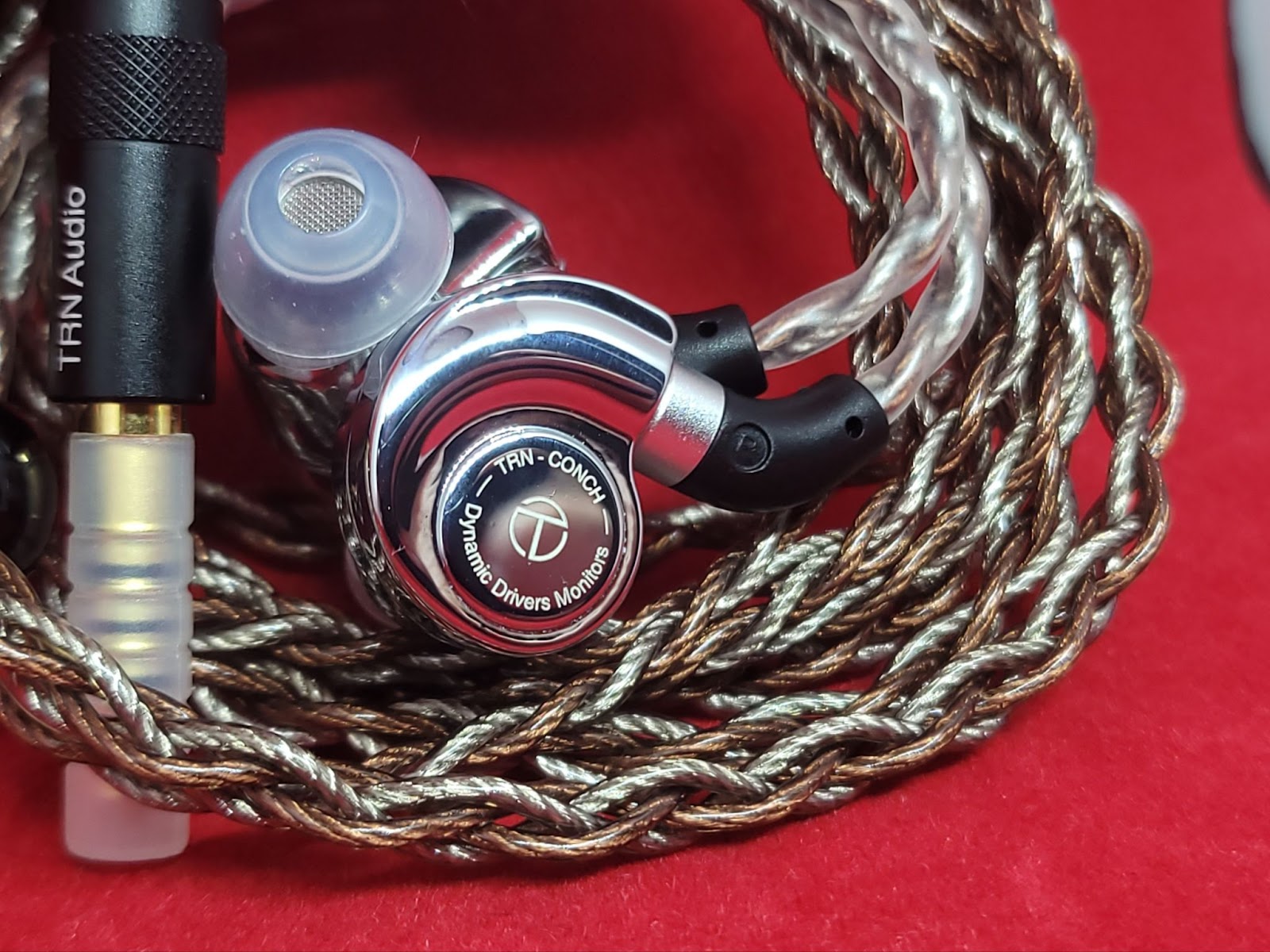
TRN Conch was provided to me by Cloris from shenzhenaudio.com for free. As I always say, everyone is biased one way or another so take everything you read with a grain of salt. Also I will try to be more concise and to the point in my reviews from now on without worrying about the word count etc. If you have any questions, please ask me in the comments and I will try to answer them to the best of my abilities.
With my enthusiasm above, I kind of spoiled this part. Yes earpieces of conch are fully made out of metal, and a heavy one at that. They are heavier than Simgot EW200 for example. Although they are fairly comfortable, weight causes some fatigue for me after a while.
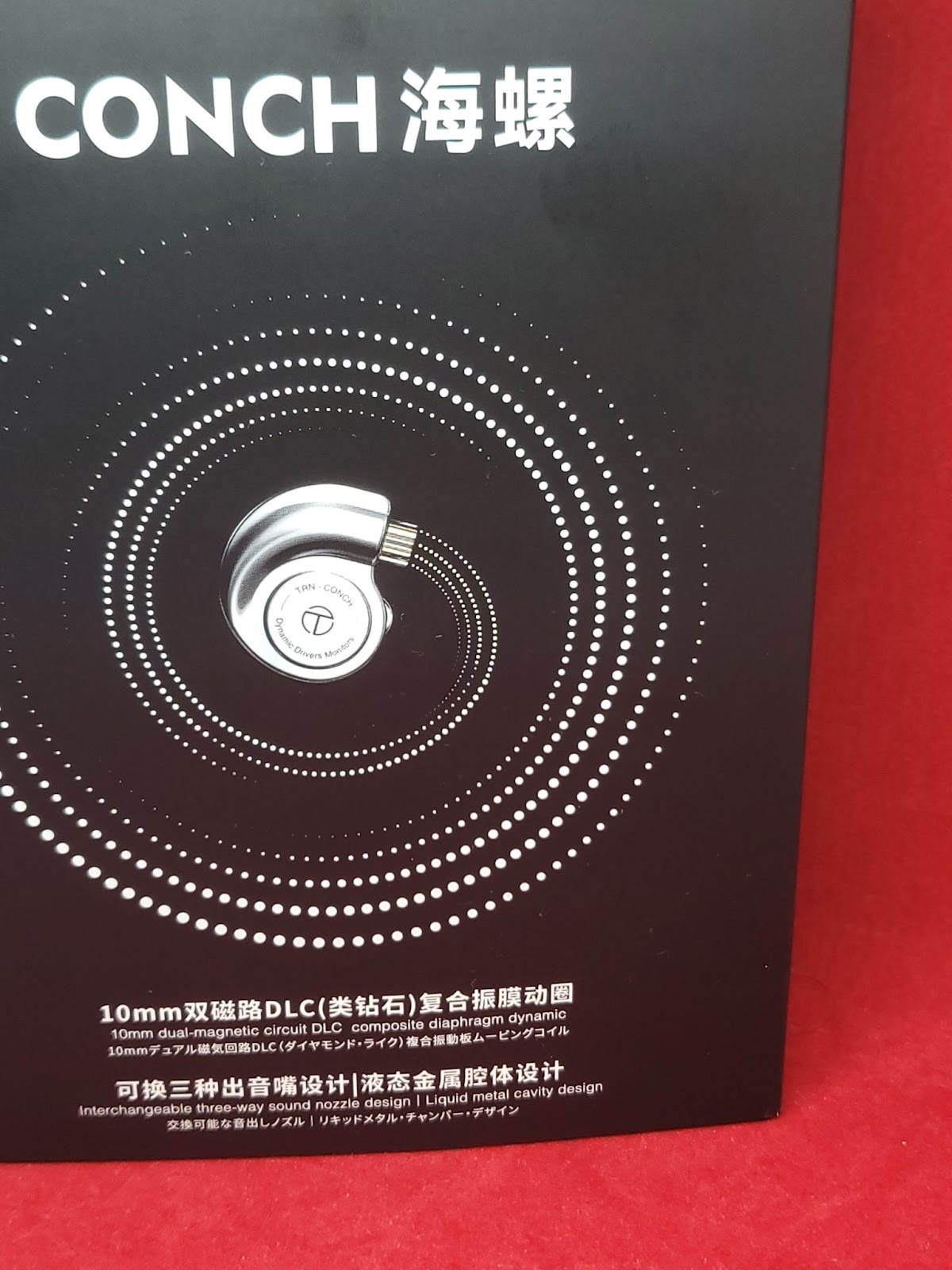
Conch uses a QDC or C-pin type of connector. Cable provided with the IEMs is a silver plated OFC one. It’s nothing too impressive but definitely better than probably anything that comes with an IEM at this price. Furthermore, TRN usually only sends one termination with their modular cables but they included all three (3.5 mm, 2.5 mm and 4.4 mm) terminations in the packaging.
Tip inclusion is also very generous. There are a total of two sets of silicon and a pair of memory foam tips. I should mention that one of the sets is theirT-Ear tips which I used throughout all of my listening. Aluminum case is also identical to the cases that come with Whizzer Kylin IEMs.

Balanced could be the best word to describe Conch’s tonality but there is more to it than that. First of all there are tuning nozzles. Unfortunately, only the red nozzles were usable for me. Even the black nozzles were too shouty, bright and harsh so I couldn’t even dare to try the blue ones. While red nozzles sounded good, they kind of held back the IEMs a little so something in between red and black nozzles would have been great. Modders?
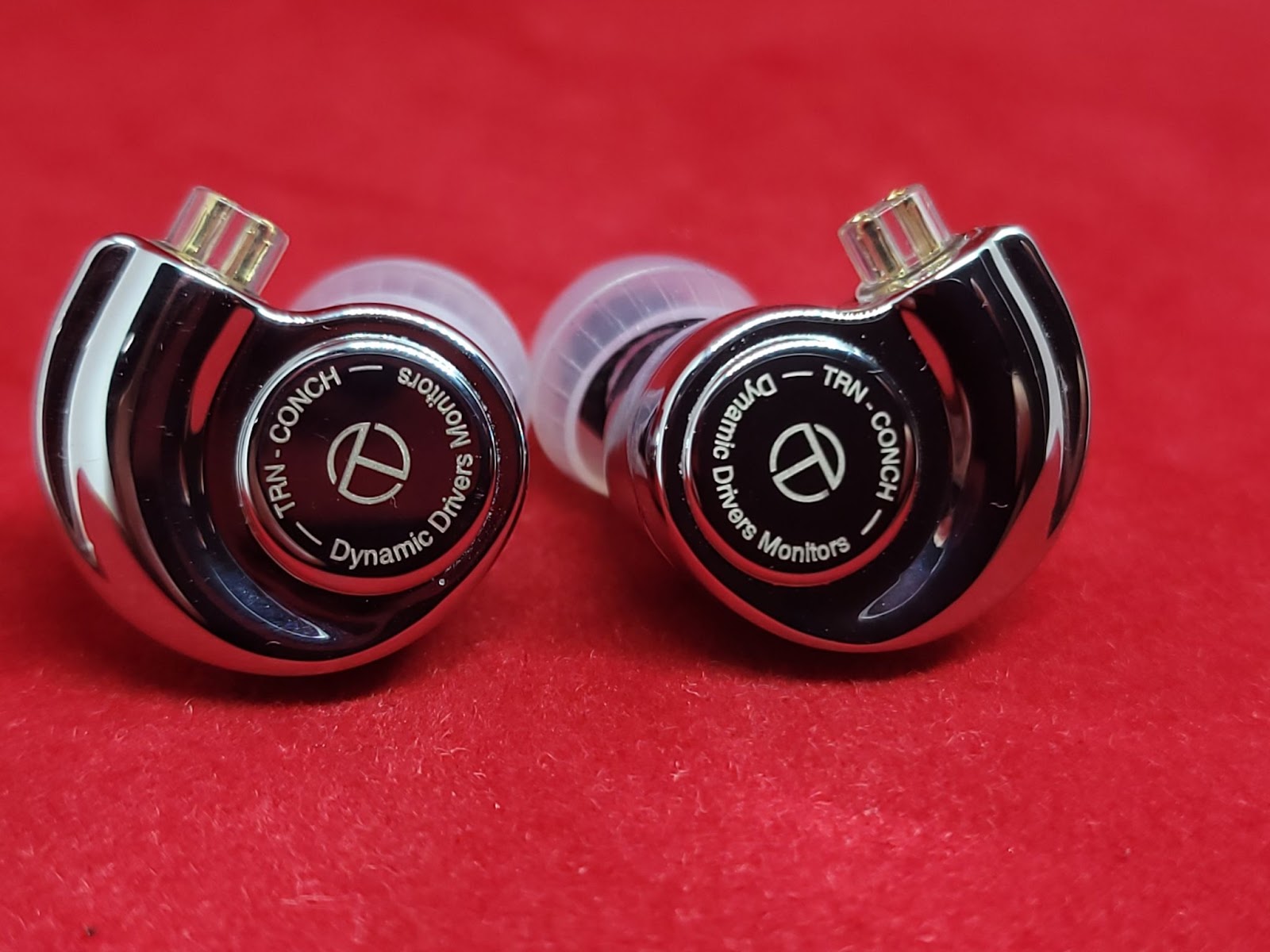
Bass of Conch has a good impact and rumble. Bass quality isn’t something special but at this price I wasn’t expecting too much anyway. Mids were also on point. Bass doesn’t overwhelm mids and mids doesn’t overshadow bass. However treble on Conch is kind of a mixed bag. While it isn’t exactly bright with red nozzles, there is excess upper energy in the upper treble which gets to you after listening for a while. The 8k peak seen on the graph isn’t just a coupler artifact, I think there exists a peak around 7k or 8k to some degree. Conch doesn’t sound piercing mind you, but rather grating. Other than that Conch sounds sparkly and splashy in the treble, maybe a little too much.
Unfortunately Conch doesn’t impress with its technical capabilities. While it is sufficiently revealing, the head stage it creates is rather narrow. Timbre is also takes a hit because of the treble quirk I mentioned. These parameters should make more sense in the comparisons section where I give more context.
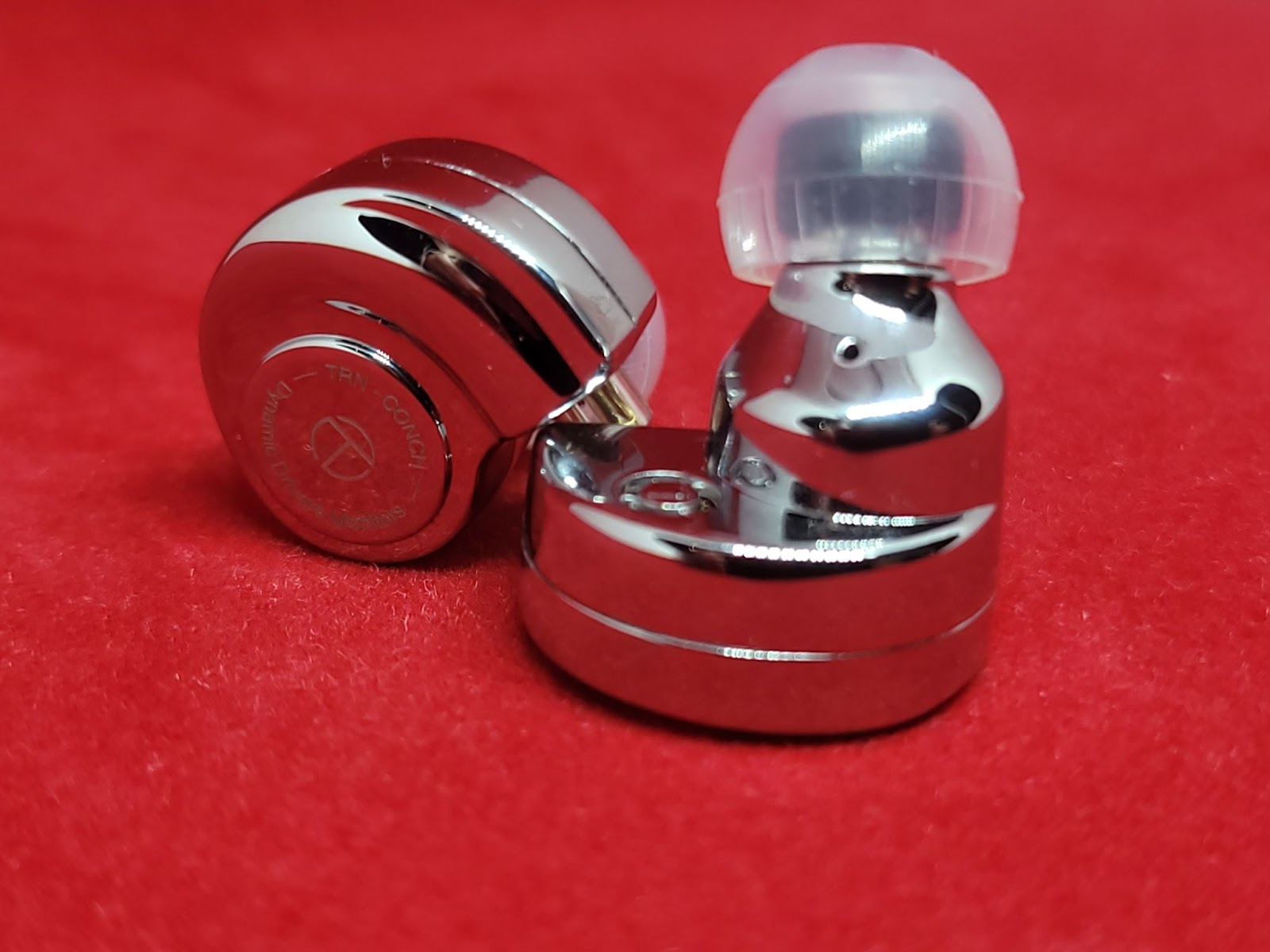
EW200 for me, is the benchmark below 50 USD. So comparing Conch to EW200 is a given to determine the place of Conch in the market.
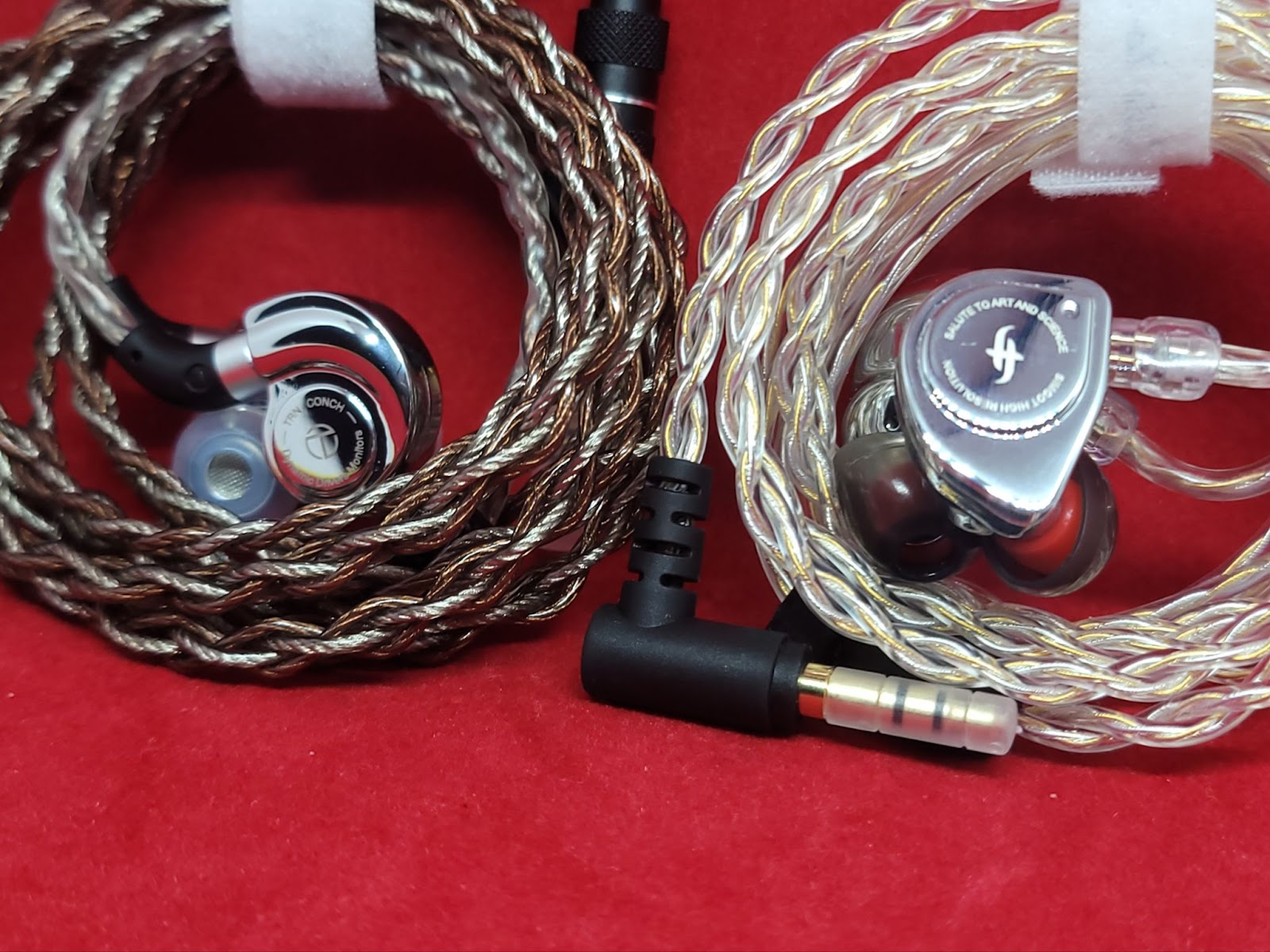
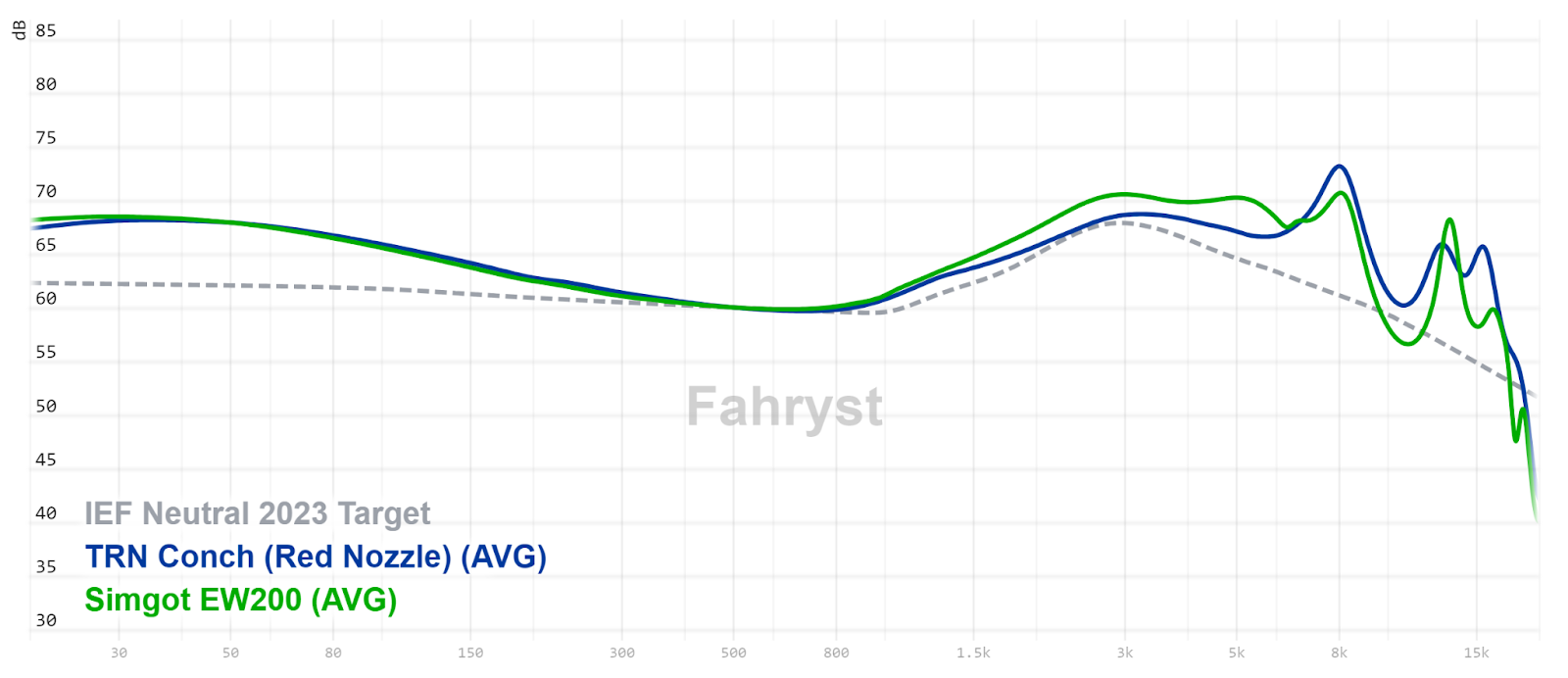
Z300 has been one of my favorite IEMs below 50 USD for some time with its build quality and nice cable as much as sound quality. Also they have somewhat similar sound signatures.
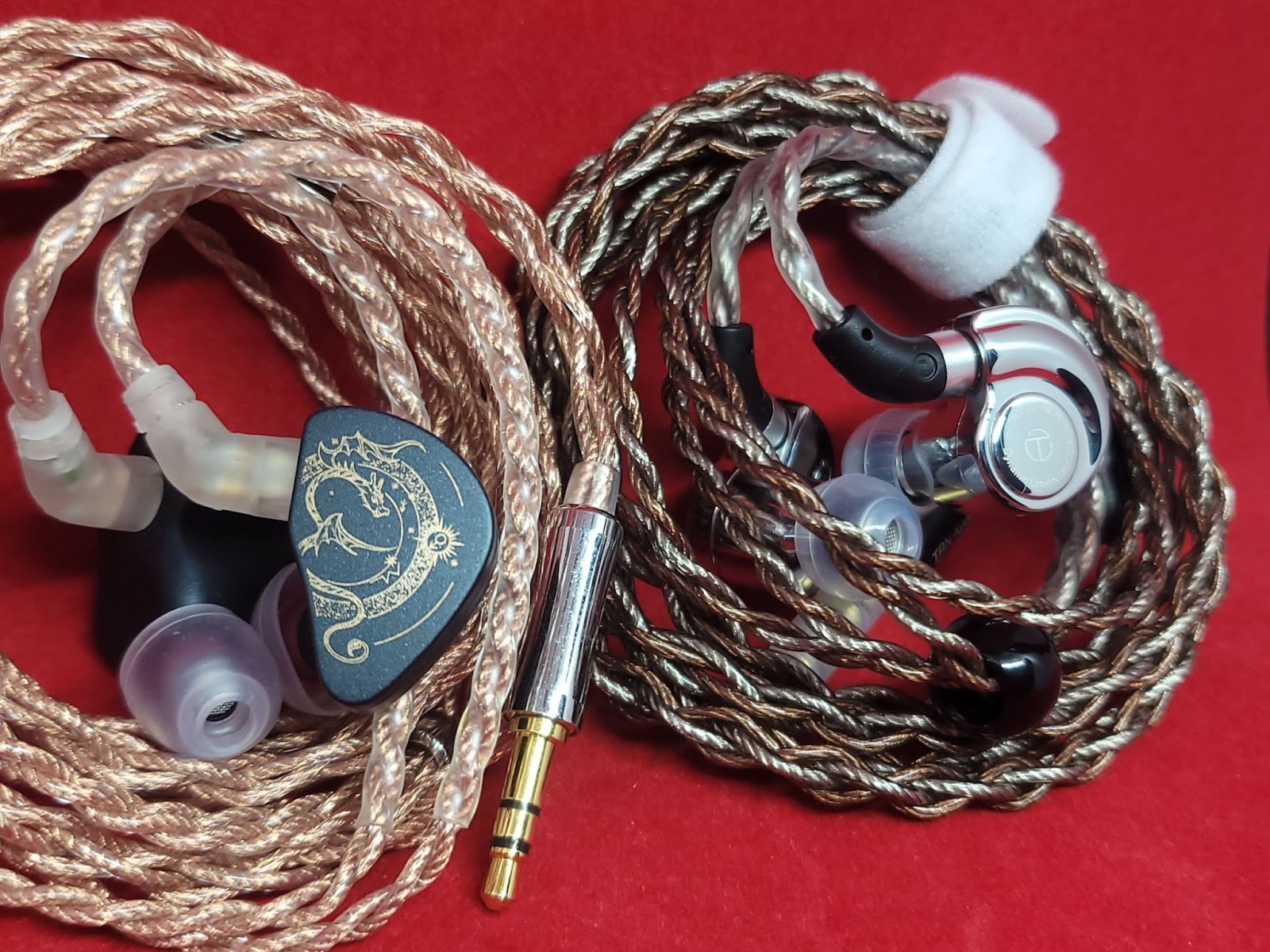
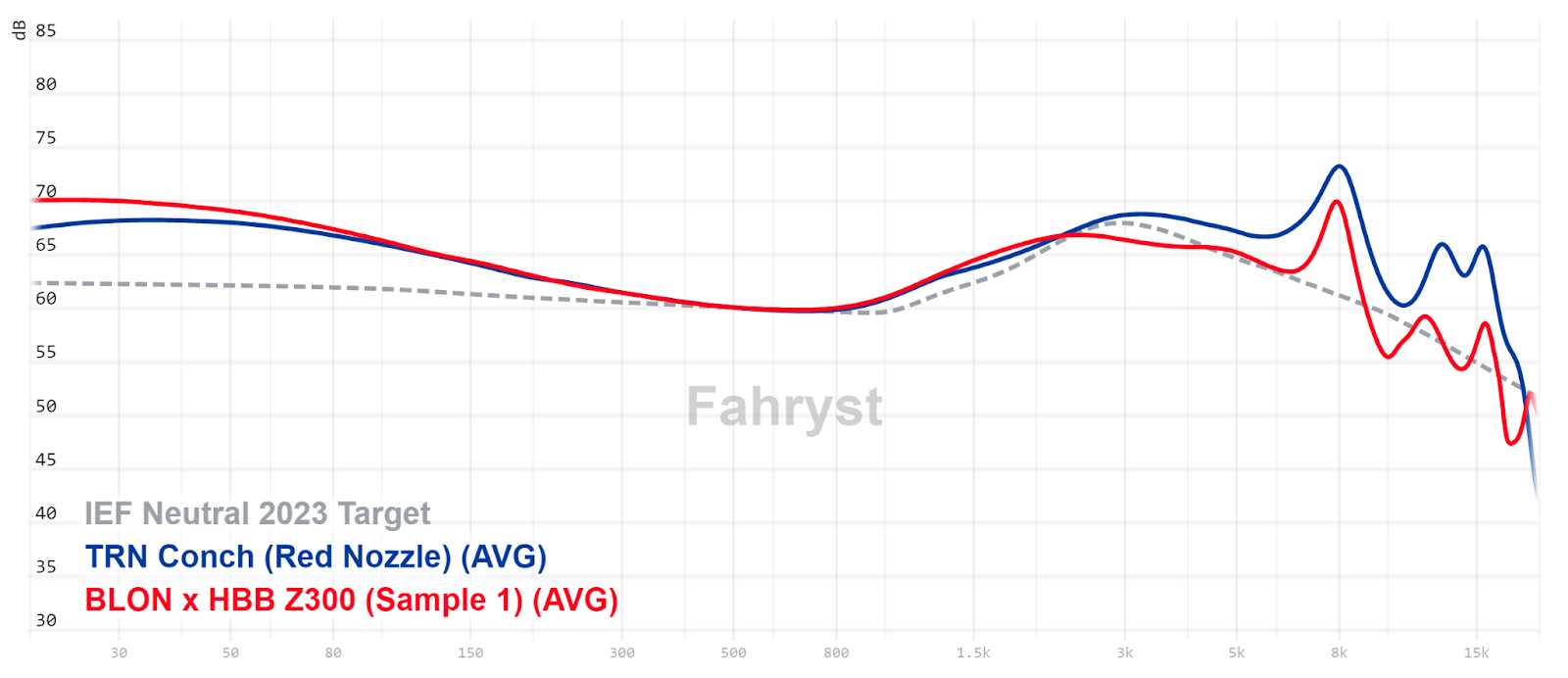
While TRN Conch isn’t the best performer in its price range, the value proposition it offers is hard to ignore. I have seen many people happy with their purchases. It has a balanced tuning that is enjoyable to listen to most of the time. But after long listening sessions, fatigue was inevitable for me. If you use EQ or like modding or aren’t sensitive to upper treble, there is definitely a big potential here. Other than that, the cable and accessories probably would cost you more if you tried to buy them separately. For the price, I think EW200 is still a better performer but Conch is a very good second alternative with a better package.
Disclaimers
TRN Conch was provided to me by Cloris from shenzhenaudio.com for free. As I always say, everyone is biased one way or another so take everything you read with a grain of salt. Also I will try to be more concise and to the point in my reviews from now on without worrying about the word count etc. If you have any questions, please ask me in the comments and I will try to answer them to the best of my abilities.
Build and Accessories of TRN Conch
With my enthusiasm above, I kind of spoiled this part. Yes earpieces of conch are fully made out of metal, and a heavy one at that. They are heavier than Simgot EW200 for example. Although they are fairly comfortable, weight causes some fatigue for me after a while.
Conch uses a QDC or C-pin type of connector. Cable provided with the IEMs is a silver plated OFC one. It’s nothing too impressive but definitely better than probably anything that comes with an IEM at this price. Furthermore, TRN usually only sends one termination with their modular cables but they included all three (3.5 mm, 2.5 mm and 4.4 mm) terminations in the packaging.
Tip inclusion is also very generous. There are a total of two sets of silicon and a pair of memory foam tips. I should mention that one of the sets is theirT-Ear tips which I used throughout all of my listening. Aluminum case is also identical to the cases that come with Whizzer Kylin IEMs.
Sound of TRN Conch
Tonality
Balanced could be the best word to describe Conch’s tonality but there is more to it than that. First of all there are tuning nozzles. Unfortunately, only the red nozzles were usable for me. Even the black nozzles were too shouty, bright and harsh so I couldn’t even dare to try the blue ones. While red nozzles sounded good, they kind of held back the IEMs a little so something in between red and black nozzles would have been great. Modders?
Bass of Conch has a good impact and rumble. Bass quality isn’t something special but at this price I wasn’t expecting too much anyway. Mids were also on point. Bass doesn’t overwhelm mids and mids doesn’t overshadow bass. However treble on Conch is kind of a mixed bag. While it isn’t exactly bright with red nozzles, there is excess upper energy in the upper treble which gets to you after listening for a while. The 8k peak seen on the graph isn’t just a coupler artifact, I think there exists a peak around 7k or 8k to some degree. Conch doesn’t sound piercing mind you, but rather grating. Other than that Conch sounds sparkly and splashy in the treble, maybe a little too much.
Technicalities
Unfortunately Conch doesn’t impress with its technical capabilities. While it is sufficiently revealing, the head stage it creates is rather narrow. Timbre is also takes a hit because of the treble quirk I mentioned. These parameters should make more sense in the comparisons section where I give more context.
Comparisons
TRN Conch (Red Nozzles) vs. Simgot EW200
EW200 for me, is the benchmark below 50 USD. So comparing Conch to EW200 is a given to determine the place of Conch in the market.
- Bass quantity is similar on both, but Conch is more powerful and impactful. It also has more body since balance skews towards lower frequencies with red nozzles. EW200, on the other hand extends deeper into the subbass.
- Vocals are more forward on EW200, they are borderline shouty. With red nozzles Conch’s mids and vocal performance are pretty much on point.
- EW200 is brighter and sounds more open. Conch however, has more upper treble energy. It is sparklier but also harsher. Compared to EW200, Conch is splashy and tends to get sibilant. With red nozzles it’s not really piercing but it gets grating the more you listen to.
- Staging is better on EW200. It extends further in all three dimensions and is more believable. Conch’s headstage feels cramped compared to EW200.
- EW200 is more resolving but Conch is no slouch either. Imaging, layering and separation however is much better on EW200. Timbre is also much more lifelike on EW200.
TRN Conch vs. Blon x HBB Z300
Z300 has been one of my favorite IEMs below 50 USD for some time with its build quality and nice cable as much as sound quality. Also they have somewhat similar sound signatures.
- Bass is more prominent on Z300, it also rumbles more but slightly more pillowy. Conch’s bass is tighter.
- Vocals are richer and more intimate on Z300.
- Conch is brighter and also more susceptible to sibilance.
- Timbre is better on Z300 as it doesn’t have the metallic shimmer that Conch has.
- Conch is more revealing but not necessarily more resolving. They are pretty much on par in terms of resolution.
- Z300’s headstage is slightly wider and deeper. It’s also slightly better at imaging.
Conclusion
While TRN Conch isn’t the best performer in its price range, the value proposition it offers is hard to ignore. I have seen many people happy with their purchases. It has a balanced tuning that is enjoyable to listen to most of the time. But after long listening sessions, fatigue was inevitable for me. If you use EQ or like modding or aren’t sensitive to upper treble, there is definitely a big potential here. Other than that, the cable and accessories probably would cost you more if you tried to buy them separately. For the price, I think EW200 is still a better performer but Conch is a very good second alternative with a better package.
kesobie
100+ Head-Fier
Pros: Insanely packed inclusions
TRN-T tips included
Very premium build quality for the price
Modular cable included
Balanced, well-rounded sound
Tuning nozzles that actually change the sound
TRN-T tips included
Very premium build quality for the price
Modular cable included
Balanced, well-rounded sound
Tuning nozzles that actually change the sound
Cons: Unrefined overall sound
Somewhat lack luster dynamics and texturing
Occasional sibilance on brighter tracks
Average technicalities for the price
Fingerprint magnet shell
Somewhat lack luster dynamics and texturing
Occasional sibilance on brighter tracks
Average technicalities for the price
Fingerprint magnet shell
TRN Conch Review: THE VALUE KING!
PRICE: $35
PROS:
- Insanely packed inclusions
- TRN-T tips included
- Very premium build quality for the price
- Modular cable included
- Balanced, well-rounded sound
- Tuning nozzles that actually change the sound
CONS:
- Unrefined overall sound
- Somewhat lack luster dynamics and texturing
- Occasional sibilance on brighter tracks
- Average technicalities for the price
- Fingerprint magnet shell
WHO THIS UNIT IS FOR:
- People who want a full package IEM set
- People who want a well built and premium feeling IEM
- People who want a well-rounded sounding IEM
- People who want a modular stock cable
WHO THIS UNIT ISN’T FOR:
- Treble sensitive people
- People who are scared to scratch their IEMs
- People who want a technical-focused set
- People who want a refined sounding set
RECOMMENDED GENRES:
- Pop
- Jazz
- Classical
- Acoustic
SHORT REVIEW:
TRN presents their best value set to date featuring a plethora of accessories like a modular cable, TRN-T tips and a very premium build to name a few. It’s absolutely insane how they were able to pull this off for just $35. Alas, some sacrifices were made, particularly in the audio front. It’s neither the most technical nor the best tuned, but it is decent enough to make this an absolutely solid set to recommend to beginners. RECOMMENDED!FULL REVIEW
Chifi has reached that level of saturation in the budget segment that you can almost never go wrong picking anything that has come out in the past year. With this, competition is extremely tight and you start to wonder how companies can top what seems to be the golden age of Chi-Fi. If your set sounds just as good as another, how can you make yourself unique? Well, one brand has come out with probably the riskiest but most indulgent solution yet. Join me as I review TRN’s latest budget release that is potentially the best value set you can get today, the TRN Conch.
DISCLAIMER: The TRN Conch was lent to me by a friend to review. I will ensure to share my 100% honest opinions on the product itself. My thoughts and opinions are mine and mine alone.
Audio is a very subjective hobby and as much as I try to objectively explain my thoughts and opinions, your mileage will vary. My preferences will also affect how I perceive the gear that I review. Sources and other accessories will also modify your experience. Lastly, my reviews should always be used only as a guide and not as the definitive bible. Trust your ears to know what’s good.
TRN MY FRIEND
Now, many of you are probably familiar with TRN as the brand that came up with one of the most revolutionary ultra budget set, the TRN MT1. At least I did when I started this dreaded audio journey. Since then, I’ve been quite familiar with their in-ear monitors ranging from their budget successor to the MT1, the MT1 Max and their more “expensive” releases like the TRN Xuanwu. Least to say, my opinion on TRN products haven’t always been positive with my complaints mostly due to how “rushed” some of their releases sounded. However, the Conch definitely stands to change my perception at least for this particular release. Without further ado, let’s finally take a good look at the TRN Conch.
UNBOXING:
The TRN Conch is packed in a simple black box of medium size with the Conch placed bang center with an interesting circular pattern that, I can only assume, represents the Conch shape that the IEM has. The word Conch can also be found up up top as well as some basic descriptions of the IEM below.
Behind the box, you can find a rather empty space only broken up with the contact details found printed at the very bottom.
Sliding the paper sleeve out of the box reveals the plain cardboard house that the IEMs and its abundant accessories reside in. Flipping the magnetic cover on the side reveals the Conch sitting atop a cardboard and foam cutout as well as the metal TRN carrying case, cable and the removable nozzles.
Removing the Conch and the foam holders reveal the eartips inside of their plastic pouches.
Here’s a full list of the accessories:
- 1 pair of TRN Conch
- 1 Metal carrying Case
- 1 Modular Cable
- 3 Interchangeable plugs (2.5, 3.5, 4.4)
- 2 Interchangeable nozzles (with 1 plugged into the IEM)
- 7 Pairs of eartips (3 TRN T of S,M,L, 3 Basic Silicone Tips of S,M,L and 1 pair Foam eartips)
Right off the bat, I think it’s worth mentioning just how absolutely decked the Conch is with its inclusions for $35. You might think that the inclusions with the Conch have to be substandard for its asking price, but you’d be surprised to know that they’re all good quality. Not only do you get a full pack of TRN T tips, you also get a good quality modular cable, good quality earpieces and interchangeable nozzles. That’s on top of including their metal carrying pouch which makes you wonder how TRN is earning anything from including this much in their package.
Alas, the TRN-T tips provide a solid pairing with the Conch and that metal case is spacious enough to actually protect your IEMs unlike most carrying cases in the market today. The balanced silicone eartips were unfortunately not for me as the silicones could not properly seal in my ear and foams genuinely hurt my ears. But that does not take away from the fact that they basically have it all for everyone to see which eartips they preferred.
Overall, I think it’s no surprise that the Conch provides the BEST accessory list in its price range. Nowhere will you find a product this well accessorized without sacrificing much elsewhere. And you’ll see very soon that they really did not sacrifice on other aspects of the IEM just to flex that they have the most and best accessories for the price.
BUILD & FIT
The TRN Conch struck my eyes during their 12.12 promotion sale as they announced the Conch along with a couple new products like the Orca and MT4 Pro. The Conch was especially interesting due to what seemed to be a full metal build and tuning nozzles. Little did I know, my mind would further be blown upon finding out its SRP of $35.Talking about its technical specifications first, the Conch features a single 10mm DLC dynamic driver housed in a liquid metal cavity and uses a 0.75 2 pin QDC connector.
It’s a step up from smaller IEMs like the Moondrop SSR with an all metal glossy finish that is both a beauty and a hazard due to how fast this gets riddled with fingerprints and, if you’re careless, scratches. You can also see why this was called the “Conch” as its overall shape is akin to a circular conch shell found in your local seashores.
Moving unto its physical features, you can find some printing atop the Conch’s faceplate contained in the circular protrusion which is shaped around with a fatter piece that leads to the QDC connector.
There are no vents to be found on the sides of the IEM, instead features a golden vent with the L R indicator printed at the very center.
The overall shape of the inner shell is a “universal” shape which means it features no discernable wings that dig into your ear for stability. Instead, it features a rather flat inner shell design which is disturbed by the rather larger nozzle base with extends very slightly from the inner shell before tapering to the nozzle. You can also find a pressure vent on this nozzle base.
The nozzle itself is detachable and is made of what seems to be a lightweight metal, but I could not properly identify as it has a rather brushed finish that makes it seem both plasticky due to its weight but also sturdy due to its finish. It’s a rather standard looking nozzle with an o-ring on the screw side indicating which tuning nozzle you’re using.
Comfort wise, the Conch are expectedly comfortable due to its universal shape that allows it to sit in your ear without pressure in your ear. Long listening sessions also proved to be very comfortable thanks to the thoughtful earhook design and respectably sized nozzle allowing for a stress-free listening experience.
Seal and Occlusion are just about average due to its more lose and comfortable design which leaves some areas lacking proper seal, but not so much to the point of a bass leak. If you experience such, consider tip-rolling as it is still supposed to seal. Due to this, the occlusion effect is minimized and there is no driver flex or ear pressure build up which was superb and made my experience with the Conch all the better.
Stability is average to below average due to the universal design which meant small movements may cause the IEM to move around and potentially pop out. With the proper tips, this is mitigated and I found that the TRN-T tips best complimented the Conch in terms of comfort.
Moving unto the cable, it’s a rather impressive 4-core silver plated and oxygen free copper modular cable that features 2.5mm balanced, 3.5mm single ended and 4.4mm balanced which is an absolute treat for the price. Whatever source you might have, the Conch probably has the plug for you.
The cable itself has a copper and brown finish which is a tried and tested color configuration for not only stock but after market cables. I find them to be quite attractive to look at and fits the Conch’s rather plain and reflective design.
The cable itself is soft and supple. It is neither too heavy nor too lightweight or cheap feeling. Each strand exudes with confidence without compromise. It’s not memory prone which makes it a very behaved cable when being stored in its case, but also when just placing it down on a table. This makes it a treat when doing photography as I am able to manipulate the cable to whatever shape without it moving about. It also does not irritate my sensitive face which is a big plus in my book.
The interface of the cable are also pretty good for what it is. The jack is easily the most impressive aspects due to its rather robust and sturdy modular design that is admittedly on the longer side. The modular aspect is held together through a basic plug without any locking mechanism which is definitely a cause for concern for the long term as there’s a chance that the modularity might come loose and cause for unwanted disconnections. At the very least, the materials used are quite premium which could at least tire some of your woes about its longevity.
The chin cinch and y-split are made from a basic plastic material with the cinch being of a rounded shape with a moderate amount of effectivity at cinching on your chin. It’s not the best that I’ve found, but it’s at the very least sufficient enough to keep it there when sitting still.
The earhook design is sufficient and comfortable. It did not cause for any discomfort over long listening periods and compliments the shape of the IEM.
Overall, the Conch retains its high value with the cable and IEM proving to be of superb quality. The metal shell exudes a premium feel without compromising comfort thanks to its universal design and the modular cable is both aesthetically pleasing and functional.
SOUND
With the phenomenal presentation that the Conch provided in the previous sections, can it keep up in the sound department?Before I start talking about the sound, I would like to state that the testing was done on the red ring nozzle as I found this to be the best nozzle out of the bunch
Sound Signature
The TRN Conch has a U-Shaped sound signature with extra warmth in the low end and sparkle up top. There’s a slight metallic tinge in the upper frequencies with overall vocal timbre being generally organic
Source Pairing and Drivability:
The Conch are relatively easy to drive despite having 30ohms of impedance.The 114db sensitivity allows the Conch to still sound decent with lowered powered sources, however I highly advice running the Conch through at least a dongle DAC as when used straight from a smartphone, the Conch has the tendency to sound rather dead and stale.A warmer source like the Zishan U1 is a perfect pairing with the Conch as it adds extra layer of low end energy that the Conch would do better off with.
There’s also minimal audible noise floor which is great for less efficient sources.
Bass
The Conch’s bass is generally quite smooth with a solid contrast between the midbass and the subbass. It’s not a bass monster by any means, but it’s quite smooth and clean. On well mixed tracks, the bass never sounded muddy or bloated. However, I found that it lacked that extra umph and punch that my library usually enjoys.Listening to bassier R&B tracks like Show You The Way by Thundercat felt like it lacked the extra punchiness in the kickdrum and bass. It’s not missing, mind you, but it just felt like it was lacking that extra energy to get you moving.
Where the Conch falls flat is, well, the bass definition. The bass texture was audibly lacking heftiness and nuance that I usually look for which could be attributed to a quality of the Conch that I will be talking about in the upcoming chapters. Again, it’s not absent and due to the less aggressive bass tuning, it doesn’t sound muddied up in the mix. However, it was being overshadowed with the rest of the mix which makes bassier instruments sound rather stale.
Overall, the bass region is quite linear in presentation which will leave bassheads wanting for more but those like me who like a leaner bass response punching the air in joy. I just wish it had more texture and punch.
Mids
This transitions us into the midrange which is, in all fairness, quite impressive with how the instruments are being presented in the mix. There’s no distinct recession as most of the mix sounds quite linear with male vocals providing a similar amount of energy as female vocals. This means that you wouldn’t feel like you’d be missing out on any vocal and instrumental cue.However, the comments I made about the bass lacking definition still applies here as male vocals have the tendency to be on the leaner side with more emphasis on making vocals sound open rather than bodied. There is still a decent amount of body, but it definitely borders sounding quite dry and lifeless. Notes are still generally well defined, but there’s this odd quality that vocals tend to sound compressed together which i’ll be talking more about in the technicalities section
Fuji Kaze’s Kiri Ga Naikara is a prime example as his vocals is borderline dry sounding with just enough body to give his vocals some weight.
Female vocals fair better as the sparkle in the upper mids is more that sufficient to give life and body to vocals without getting shouty or unnaturally forward. Chakra Khan’s Through The Fire sound wonderful thanks to the combination of Chakra’s warmer vocal color and clean midrange presentation of the Conch.
Instruments generally follow the same pattern with lower frequency instruments often lacking proper note weight with upper midrange instruments being presented quite well. Synths are especially satisfying like in the track Wake Up by SOS.
Overall, the mids are quite linear which leaves you not missing out on much. Both male and vocals are presented very well, albeit male vocals tend to lack a little bit of authority and body and borders sounding too thin. This line, however is perfect for those who want an uncolored vocal presentation.
Treble
This is the part of the Conch where I feel quite divided as I enjoy a brighter treble tuning more than the average person, but the Conch presented treble in a rather rough and edgy way.The transition from the upper mids to lower treble is very well done. I did not encounter and harshness or peaks in that region which allows for higher female vocals and air instruments to sound quite satisfying.
Where it starts to get quite troubling, however, is the mid treble to upper treble region. There’s this distinct spike that masks the rest of the treble and douses the overall mix with this rough, grainy treble presentation riddled with sibilance and harshness. This alone almost ruined my listening experience with the Conch and felt like the rest of the mix was underwhelmingly dull sounding due to the overemphasis of this region.
The Chain by Fleetwood Mac, a famously brighter leaning track, has a distinct sharpness to the mix that is especially prominent with the Conch and stabs in your ear, even if The Chain is a well mixed song.
The overall treble region is quite the mixed bag. The lower treble transition was beautiful and presented instruments and higher female vocals with a solid sense of brightness and forwardness. However, that roughness in the mid to upper treble nearly killed the rest of the frequencies due to the grittiness and sibilance.
Technicalities
The Conch has, surprisingly, a decent level of technical ability. Nothing that punches above its price, but respectable for what it’s worth.
Starting with its dynamic ability, the Conch unfortunately lags behind on this regard. Potentially due to the overemphasized treble, its dynamics are on the flatter side with note contrast being on the softer side.
The resolution is quite decent for its price, but again nothing too spectacular. Notes presented aren’t as well defined which causes certain notes to sound a little flatter and more linear with the rest of the mix.
Headstage is decently expansive, albeit wider than tall. Imaging is not holographic in any way, but it can pan left to right quite well.
Separation and Layering is probably the aspect that really popped out to me upon listening to the Conch as having come from the EW200, I was expecting a very similar presentation to its separation and layering. Unfortunately, there was a more audible congestion in the entire mix that left more complex sounding more clumped up together.
Overall, the Conch offers a respectable technical ability for its price that is neither impressive nor disappointing. Honestly, there’s not much to say about the Conch’s technical ability that others in this price range haven’t done before.
REAL WORLD USAGE:
The Conch are quite the performer for casual use mainly due to its comfort. It was so comfortable to wear for long periods of time that I find that I’d forget I was wearing it on certain occasions.However, the tuning might definitely turn some people off as any sibilance from a video will be absolutely emphasized with the Conch. This will force you to lower the volume which, in certain scenarios where you’re watching a film with a huge dynamic range, might be a detriment as you wouldn’t be able to hear the more nuanced sound cues.
I also found the Conch to not be as stellar for gaming due to the same reason as I find myself cranking the volume to hear softer cues like footsteps and gunshots to which that treble peak will definitely not help with my slowly deteriorating ear health.
The less engaging bass presentation might also be lacking for more immersive games, but it does make up for having a rather linear presentation that makes the entire mix quite flat. It, unfortunately suffers from the similar dynamic issue in films.
COMPARISONS:
Vs Other Tuning Modes
Finally, let’s compare the different tuning nozzles of the TRN Conch. I will be talking about them in comparison to the Red NozzleStarting with the Black nozzle, also called the “reference” nozzle, this is your run of the mill v-shaped tuning with a lot of upper mids emphasis that is borderline shouty and an even thinner bass to lower midrange. This is more akin to a Harman-neutral sound with extra upper midrange emphasis. I actually found the treble to be more bearable in this mode, but sacrifices the rest of the frequencies.
The Blue nozzle is essentially the black nozzle but with an even more forward upper midrange which masks the treble but skews the tuning to overall be shoutier
Vs Simgot EW200
Probably the comparison that makes the most sense, the EW200 fills a very similar market to as the Conch of a well built, brighter leaning set.
All in all, the EW200 is still the better IEM in terms of sound quality as the sound is overall more refined. The bass is more tactile, vocals are fuller and more nuanced and treble is smoother yet more detailed than the Conch.
Realistically, the only thing the Conch beats the EW200 on is the accessory department by a big margin. The EW200 was criticized by not really having a lot of accessories to which the Conch is a stark contrast with its abundance of such.
Overall, the Conch is a step down from the EW200 in terms of sound quality and a massive step up in terms of accessories. If you wanted to have a complete accessory setup and can live with an IEM that is decent for its price, the Conch is a perfectly justifiable purchase
Vs KZ D-Fi
Comparing this to an older KZ set with a similar all metal shell like the Conch around a similar price range, the D-Fi features a more varied neutral DF to Harman DF style tuning with a focus on musicality.
The D-Fi has a generally smoother tonal balance over the Conch, but the Conch features a more adept dynamic and transient ability allowing music to sound more energetic and lively. The technicalities are also generally above the D-Fi in almost every single way.
However, my personal tastes still fall to the D-Fi for its more musical sound allowing for a generally more euphonic listen compared to the Conch. The Conch is objectively the better IEM in terms of driver quality and the aforementioned accessories, but I still personally prefer the D-Fi in terms of tuning.
Vs Moondrop Chu 2
The Moondrop Chu 2 is another all metal single DD, priced a little lower at $20 and has a more v-shaped sound signature compared to the Conch.
The Chu 2 is a more dynamic and fun sounding IEM compared to the Conch, whereas the Conch edges the Chu 2 in terms of technical ability and detail and a more “neutral” sound.
Between the two, it becomes purely a preference decision as the Chu 2’s more v-shaped tuning allows it to have solid versatility on most genres but lack the edge that some might prefer on the Conch’s leaner and brighter sound profile.
Vs HZSound Heart Mirror
And of course, we have to compare it to my reference full metal single DD reference set, the Heart Mirror.
As expected, the Heart Mirror is an even more analytical sounding set with more focus on providing a neutral bright listening profile. Oddly enough, I found the Conch to sound thinner and harsher than the Heart Mirror which I really did not expect, considering the Heart Mirror’s reputation to be on the harsher side.
Bass emphasis is unsurprisingly more emphasized on the Conch, but what is more surprising is that note weight feels just a tad bit heavier on the Heart Mirror. It could be the overemphasized mid treble region of the Conch, but the edgier treble presentation of the Conch made me feel like it was more fatiguing over longer listening sessions.
The Heart Mirror is still a step above the Conch in terms of technicalities, particularly with how surprisingly more dynamic and resolving the Heart Mirror sounds compared to the Conch. The Heart Mirror also gets less congested than the Conch, particularly in the mid to treble region.
Overall, the Conch is a more balanced and well-rounded set compared to the Heart Mirror. However, the Heart Mirror is still better in terms of technicalities and personal tuning preference.
CONCLUSION:
The Conch showed itself to be quite the jam-packed IEM from the unboxing to the listening impressions. It’s second to none in accessory offerings for the price and the sound, while not the best in class, is respectable for the price.
The Conch is now the new benchmark for accessory offerings in budget IEMs as it did not compromise in the quality of the IEM itself, despite my comments about its sound.
However, that doesn’t mean that the Conch cannot be improved further. Fine tuning on the treble region will definitely help the Conch to sound more fitting to its marketing material to be a “relaxing” listen as those treble spikes did not relax me one bit.
Besides that, the Conch is a well-made, well-accessorized in-ear monitor with a respectable enough sound for most people to enjoy. What really guaranteed that this is an IEM I’d recommend is its tuning versatility not only stock but what it could potentially be due to the tuning nozzles. And at $35, it’s a wonderful IEM for people starting in the hobby or a DIYer looking for their next Frankenstein monster of an IEM.
SOURCES USED:
- HiBy R3 II
- HiBy M300
- HiBy R6 III
- Zishan U1
- VE Avani
- Non-hifi Smartphone
- Hidizs XO
TRACKS USED:
Tracks used are a mixture of lossy streamed from Spotify, YouTube Music, etc and lossless (as well as Hi-Res and DSD) from my local filesSpotify Playlist:
ACCESSORIES USED:
Tips:
- TRN-T
- Final E
- Foam tips
- Stock balanced eartips
- Tangzu Sancai
- TRI Clarion
Cable
- Stock cable in 3.5mm, 2.5mm and 4.4mm
Thank you for checking out my full review of the TRN Conch. If you would like to buy your own check out the non-affiliated link below: https://www.aliexpress.us/item/3256...om[/EMAIL] Enjoy music and have a great day!


